Where to Visit
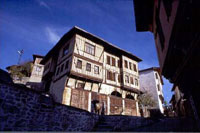 The town is best know because of its old Turkish houses and has numerous pieces of art, of which over a thousand are under protection. There are two distinct areas: Carsi in the south is the old area of town, and location of most of the winter houses, whereas Baglar has the summerhouses. Between them is Kirankoy, famous for the Greek houses that display more top quality masonry, and home to the Greek population until the early 20th century.
The town is best know because of its old Turkish houses and has numerous pieces of art, of which over a thousand are under protection. There are two distinct areas: Carsi in the south is the old area of town, and location of most of the winter houses, whereas Baglar has the summerhouses. Between them is Kirankoy, famous for the Greek houses that display more top quality masonry, and home to the Greek population until the early 20th century.
The area of most interest to the visitor is in Carsi, seen from the castle in the north, also known as Eski Safranbolu. Hidirlik Hill to the south is the location of two monuments, and was used as an open-air venue for rituals in previous centuries.
Some of the area’s most interesting historical locations are the castle and surroundings, which was the initial settlement area; the Old Government Building; a 200-year old clock tower still in working order; and the jailhouse, now disused.
Within the city there are 25 mosques with historical importance, the most famous of which are Koprulu Mehmet Pasa, and Sultan III. These were constructed by Selim’s Grand Vizier, Izzet Mehmet Pasa.
The newly restored Cinci Hani, the most famous building in the old part of town, is a caravanserai dating back to 1645. Next to that is Cinci Hamami, still working today with separate baths for men and women, with a marble interior and strong light coming in from the domed roof. Both were constructed by Cinci Hoca, from Safranbolu.
The business and commerce of the town are kept as close to the traditional means as possible, and goods are made and sold in the bazaars like Yemeniciler Arastasi. Iron, copper and tin are crafted in traditional means, and the Packsaddle Maker’s Bazaar has preserved the craft in the city.
Outside Safranbolu
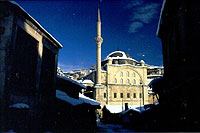
Safranbolu has impressive areas of natural beauty in addition to its historical and architectural interest. Areas of dense forest, canyons and valleys all offer other activities such as trekking, mountaineering and cycling, as well as the more gentle activity of picnics.
Places of interest outside the town include Ancekaya Aqueduct and canyon, the houses of Yoruk Village, Bulak and Hizar Caverns, Hacilarobasi, Ucboluk and its surrounding rock tombs, Duzce Canyon, Saricicek Plateau and Uluyayla.
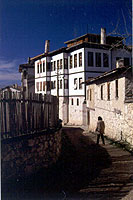
Yörük Village
Yoruk Koyu, 11km in the east of Safranbolu, is a village of old houses and the feel of an open-air museum. The houses, which most of are affluent, and streets are under protection and are in good condition. Highlights include Kaymakcioglu Konagi, Sipahiler Konagi, Ahsap Cami and Camasirhane, which is a restored art gallery. There is a couple of relaxing restaurants set within shady gardens.
Natıonal And Natural Parks
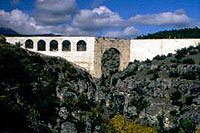 Safranbolu has impressive natural beauties besides historical piece of arts and houses. Dense forest areas, canyons and valleys are maintaining possibilities for other touristic activities such as trekking, mountaineering and cycle as much as it is appropriate for picnic.
Safranbolu has impressive natural beauties besides historical piece of arts and houses. Dense forest areas, canyons and valleys are maintaining possibilities for other touristic activities such as trekking, mountaineering and cycle as much as it is appropriate for picnic.
Incekaya Aqueduct and canyon, marvelous houses having Yörük Village, Bulak and Hizar Caverns, Hacılarobası and Üçbölük Village surrounding Rock Tombs, Düzce Canyon, Sariçiçek Plateau and Uluyayla, Gürleyik Picnic Area are the other tourism areas of the city.
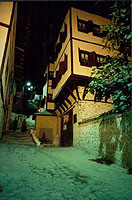
Museum Houses
Many of the oldest houses have been made into museums by cultural departments, and most have attractive tea gardens. Kileciler Evi is one of the best, and has been restored and organised by the Ministry of Culture as a good example of an old Safranbolu house and its lifestyle. Other well known ones are Mumtazlar Konagi (Mansion with pool) and Karauzumler Evi.